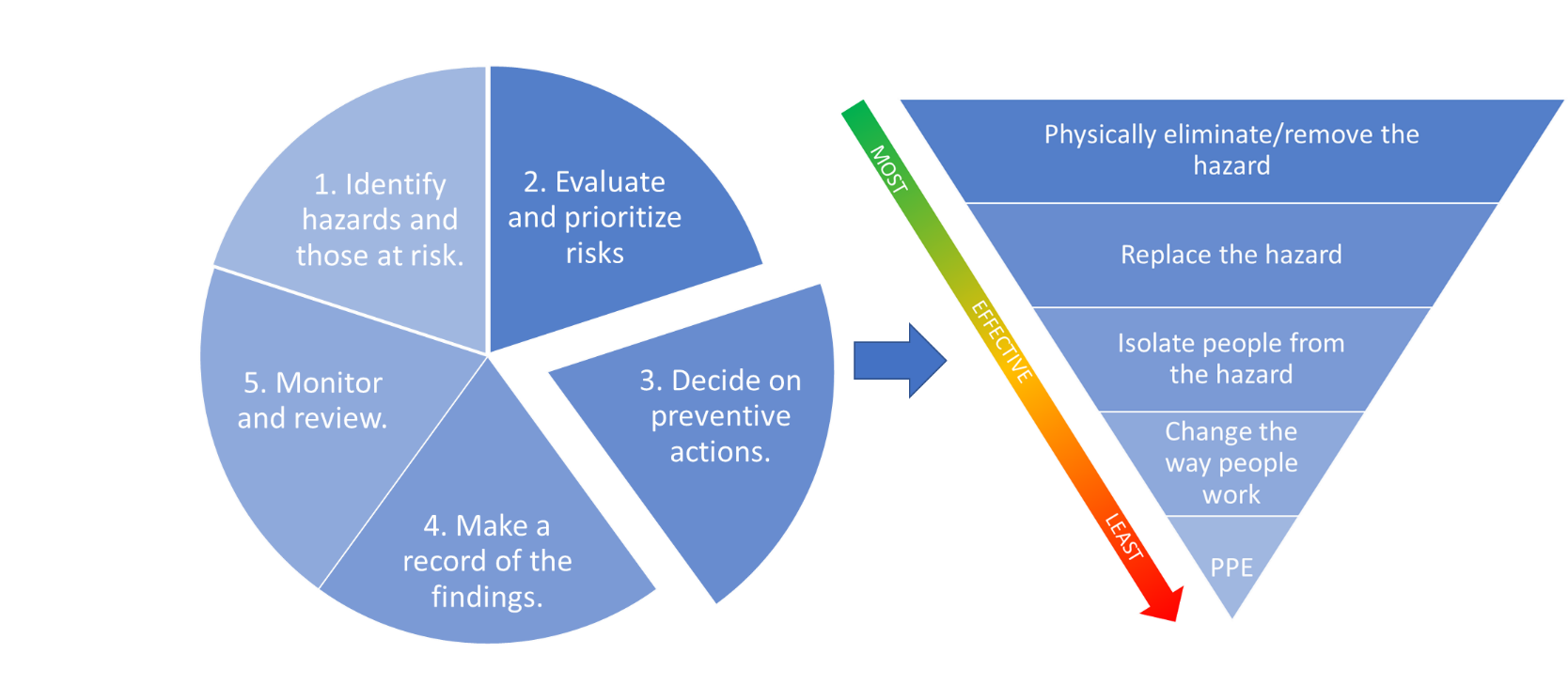Some things have changed during these months away from our normal workplace, away from the routines and social life we used to have. These changes make us take a step back and think about our basic needs: physiological needs and safety. For companies it is important that both the employees and customers feel safe before the economy restarts properly.
When returning to work after the COVID-19 lockdown, employees expect well prepared workplaces with good management, that the risks have been evaluated and assessed beforehand and that there are implemented plans to prevent occupational exposure to COVID-19. Therefore, prepared psychosocially safe workplace are of utmost importance to reassure the employees of a safe return to work. It is also very important to consider and support the higher-level needs such as the feeling of belongingness and the need for interpersonal relationship and esteem needs.
PREVENT
As an employer you are obligated to take care of the health and safety and general working conditions for your employees. Managing the health and safety risks is an ongoing process which starts by the identification and assessment of the risks at the workplace. When the hazard analysis and the risk assessment is properly done, preferably by participatory discussion with the employees and by using collaborative methods, the employer should provide necessary instructions and procedures to the workplace.
Due to the COVID-19 pandemic, the risk assessment should be updated, and the employer needs to consider measures to prevent the coronavirus infection from spreading. The hierarchy of control measures follows the model from eliminating the risk totally, replacing the risk, isolate the people from the risk, reducing the exposure to the risk by administrative controls, to protection of the employees with personal protective equipment, PPE. Methods on top of the hierarchy are more effective and protective than those at the bottom (figure1.).

However, the virus we are fighting in the in the COVID-19 pandemic, is hard to eliminate and the primary measure to prevent the worker’s exposure is to avoid human contact, i.e. to work remotely. When the restrictions now gradually are lifted, organizing the work conditions to minimise the risk of exposure, e.g. by physical distancing, enhancing hygiene and cleaning, using engineering controls like protective screens and using managerial controls, is the most important. Personal protective equipment, PPE, are used in line of work where the risks cannot be properly controlled. PPE’s are considered based on the risk assessment and should meet the relevant requirements.
Managing the psychosocial stress factors can be done in the same systematic way. First eliminating or removing the harmful load factor, secondly providing control measures and third, creating support policies for employees affected by psychosocial stress.
To manage the re-opening phase and secure workplaces against COVID-19, the employer should assess the status of its crisis management, risks at the workstations and employee workability risks:
- Who in the organisation is responsible for coordinating the risks COVID-19?
- Which work tasks are at most risk?
- Which employees are at most risk?
- What kind of protective measures should we have and where?
- How do we ensure the workability and wellbeing at work?
- Is our occupational health service up to date with our situation?
- How we analyse and follow up the absences?
When these questions are answered and policies made, supportive actions are much easier to create.
SUPPORT
The employees who are coming back to work will all have experienced the COVID-19 lockdown differently. Many have had ups and downs but with good resilience and are as productive as before. Some belong to the high-risk group and have an anxiety of coming back. Some may even have been infected by the coronavirus and have been sick during parts of the lock-down and are literally short of breath when returning to work.
The various needs should be defined e.g. by a survey made by the HR or, in case of health questions, by the occupational health service provider. When reflecting on the individual’s needs and the analysis of the workplace risk assessment, the adjustments to the work conditions can be done in good time before re-opening and other supportive measures taken into more allocated manner.
To successfully return to work after the COVID-19 lockdown, the supervisor must take an active role. An effective tool is to have a return-to-work discussion with each employee. During the discussion, the employee gets to talk about their worries and needs and the supervisor can tell them about the preventive actions and procedures being taken and welcome them back. The open face-to-face discussion clarifies the situation for both parties and discussion should always be solution oriented.
LEAD
Knowledge based management is the best way to handle the difficult situation organisations and employees have faced due to the COVID-19 pandemic. Knowing where and what the risks are and tackling them should be the first priority. Knowing beforehand the employees’ risk groups and having solutions and procedures planned to keep the human resources functioning, is good management and will make your life much easier.
Selecting the correct path after analysing the available data, transparently communicating the situation without sugar-coating the message, projecting compassion and hope, is leadership at its best.
Preventing, supporting, and leading, transforms the workplace and makes it more resilient to face the future.
Contact us to find out more on how we can help you!

